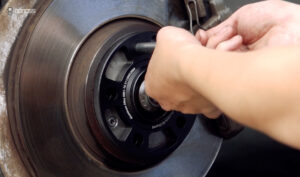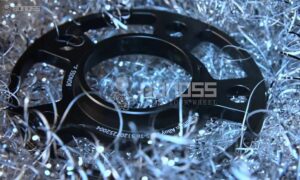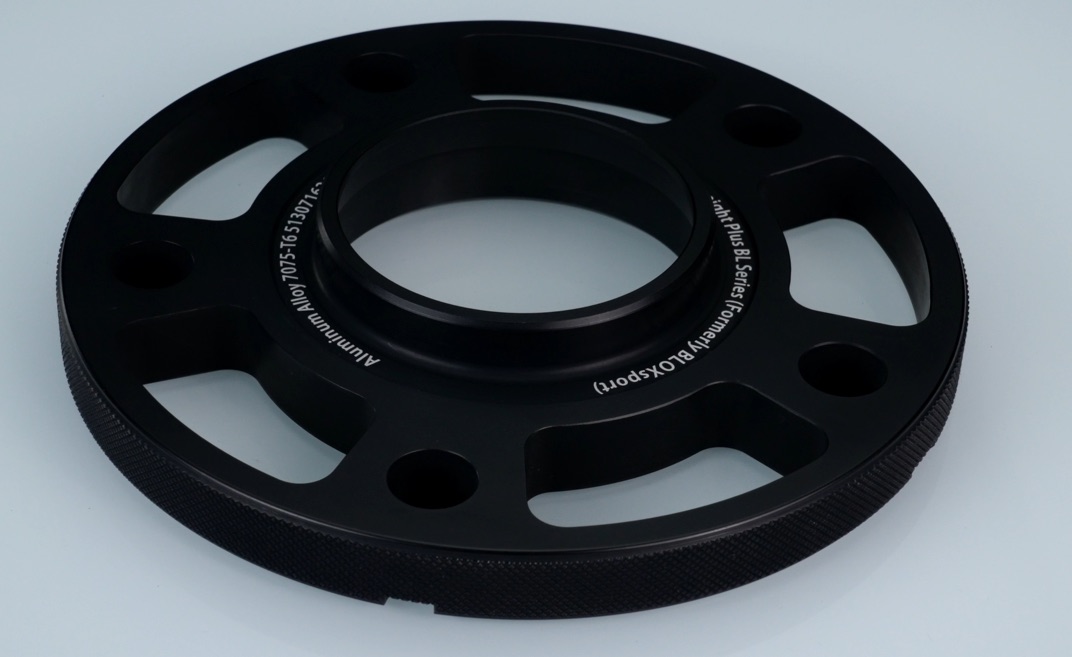If you own an Audi A4, you might have considered installing wheel spacers to improve the appearance and performance of your car. Wheel spacers are devices that fit between the wheel hub and the wheel, creating a gap that pushes the wheel outwards. This can have several benefits, such as:
- Enhancing the stance and aesthetics of your car by filling the wheel arches better
- Increasing the stability and cornering ability of your car by widening the track width
- Providing more clearance for bigger brakes, suspension components, or aftermarket wheels
- Correcting the offset of wheels that are not compatible with your car’s hub
However, installing wheel spacers is not a simple task. You need to choose the right size, type, and quality of spacers for your car, and follow the proper installation steps to ensure safety and reliability. In this post, we will guide you through the process of installing Audi A4 wheel spacers, using real cases and examples from our customers.

Choosing the right Audi A4 wheel spacers
Before you buy any wheel spacers, you need to measure the amount of space you have between your wheel and your fender. This will determine how thick your spacers can be without causing any rubbing or interference issues. You can use a ruler or a caliper to measure this gap, or you can use a simple trick: insert a stack of coins or washers between the wheel and the fender, and measure how thick they are.
Once you know how much space you have, you can choose the size of your spacers. The most common sizes for Audi A4 wheel spacers are 5mm, 10mm, 15mm, 20mm, and 25mm. However, you can also find other sizes, such as 8mm, 12mm, 18mm, or 30mm. The size you choose depends on your personal preference and the look you want to achieve. Generally speaking, thicker spacers will give you a more aggressive and sporty look, while thinner spacers will give you a more subtle and elegant look.
Another factor to consider is the type of wheel spacers. There are two main types: bolt-on and slip-on. Bolt-on spacers are attached to the hub with their own bolts, and then the wheel is attached to the spacer with another set of bolts. Slip-on spacers are simply slid onto the hub, and then the wheel is attached to the hub with longer bolts that go through the spacer. Both types have their pros and cons:
- Bolt-on spacers are easier to install and remove, as they do not require changing the original bolts. They also provide more stability and security, as they are firmly attached to the hub. However, they are more expensive and heavier than slip-on spacers.
- Slip-on spacers are cheaper and lighter than bolt-on spacers. They also allow more flexibility in choosing different sizes and offsets for different wheels. However, they require longer bolts that match the thread size and seat type of your original bolts. They also need to be properly centered on the hub to avoid any vibration or imbalance.
The type of wheel spacers you choose also depends on the type of wheels you have. If you have OEM wheels or wheels that use OEM ball seat bolts, you need to use bolt-on spacers with ball seat bolts. If you have aftermarket wheels that use conical seat bolts, you need to use slip-on spacers with conical seat bolts.
The last factor to consider is the quality of wheel spacers. You should always buy wheel spacers from reputable brands that use high-quality materials and manufacturing processes. Cheap or low-quality wheel spacers can crack, break, or warp under stress, causing damage to your wheels, hubs, or suspension components.

Installing Audi A4 wheel spacers
Once you have chosen the right wheel spacers for your Audi A4, you can proceed to install them on your car. You will need some basic tools, such as a jack, jack stands, lug wrench, torque wrench, etc. You will also need some anti-seize compound or grease to prevent corrosion or seizing of the bolts.
The installation steps are as follows:
- Park your car on a flat and level surface. Apply the parking brake and chock the wheels that are not being lifted.
- Loosen the lug bolts on one wheel slightly with a lug wrench.
- Jack up that corner of the car until the wheel is off the ground. Support it with a jack stand.
- Remove the lug bolts and the wheel from the hub.
- Clean the hub and the wheel with a wire brush or a rag to remove any dirt, rust, or debris.
- Apply a thin layer of anti-seize compound or grease to the hub and the spacer.
- If you are using bolt-on spacers, align the spacer with the hub and secure it with the bolts provided. Tighten them in a star pattern with a torque wrench to the specified torque value (usually around 90-110 Nm).
- If you are using slip-on spacers, slide the spacer onto the hub and make sure it is centered. You can use a hub centric ring to ensure proper alignment.
- Align the wheel with the spacer or the hub and secure it with the original or longer bolts. Tighten them in a star pattern with a torque wrench to the specified torque value (usually around 120-140 Nm).
- Lower the car and remove the jack stand. Repeat steps 2-10 for the other wheels.
- Check the clearance between the wheel and the fender, and make sure there is no rubbing or interference. You can also check the wheel balance and alignment if necessary.
- Enjoy your new look and performance!

Which Audi A4 wheel spacers are worth running?
BONOSS Audi A4 wheel spacers are worth running for the high quality and prior performance. BONOSS Audi A4 wheel spacers have a hollow lightweight design. These hollows run through the front and back of spacers and locate between every two adjacent lug seats. They are symmetrical to maintain the balance of the spacer. These aluminum lightweight spacers can minimize the plus stress exerted on the suspension.
BONOSS Audi A4 wheel spacers are multi-stage hub-centric. A common hub-centric spacer consists of a lip ring in the center to fit the wheel. If you hold a BONOSS spacer in hand, you can see the lip ring is staged. There are stages and chamfers in most wheel bores and hub bores. Mounting common hub-centric spacers between them is not ‘hub-centric’ enough. To truly ‘hub-centric’ to the wheel and hub, a multi-stage spacer is designed for different car models to fit the chamfers and stages in the wheel bores and hub bores. Thus, these spacers can fit perfectly with the wheel and hub. The vibration and wobble will not gonna appear.
BONOSS Audi A4 wheel spacers are stable and safe. They are made from aircraft 7075-T6 or 6061-T6 forged aluminum. Forged aluminum is far more stable and stronger than those cast spacers. Cast spacers are prone to breaking and are incapable to endure the weight of wheel and vehicle suspension. Some YouTubers have recorded them breaking a cast cheap spacer with a hammer. It is a nightmare that the wheels fly away when you are riding on the roads.
MORE POSTS ABOUT AUDI WHEEL SPACERS
- Audi A4L Wheel Spacers: Do They Make a Difference?
- Audi A7 Wheel Spacers Review
- Which 2023 Audi A7 wheel spacers are worth?
- How thick 2023 Audi S4 wheel spacers are best for offset?
- Which Audi S4 wheel spacers can fit my aftermarket wheel?
- When should you run Audi TT wheel spacers?
- Do 2023 Audi TT Wheel Spacers Cause Vibration?
- How can I get the best fitment with Audi A5 wheel spacers?
- Is it typical to install Audi Q7 wheel spacers on all four wheels?
- Do I Need Hub-Centric Audi RS4 Wheel Spacers?
- Where to Buy Quality 2023 Audi A5 Wheel Spacers
- Can I drive with Audi R8 V10 wheel spacers like stock?
- 2023 Audi A3 Wheel Spacers Review
- What size OEM 2023 Audi Q5 wheel spacers are best?
- Which size Audi RS Q8 wheel spacers are best?






